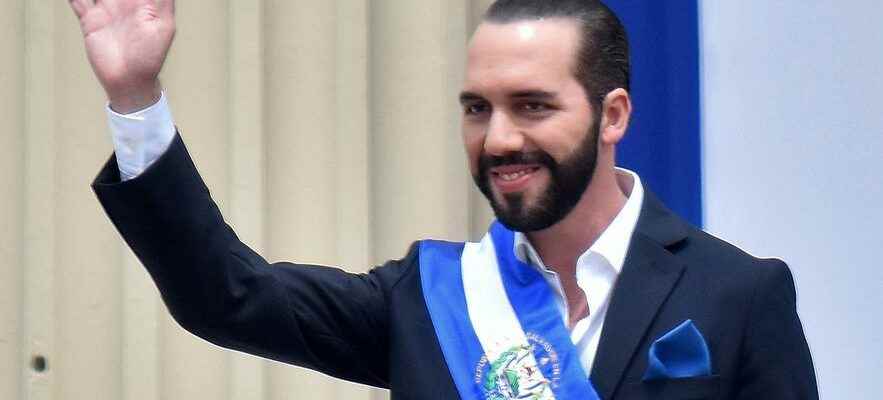Vitalik Buterin, the architect – Creator of the Ethereum blockchain
The 28-year-old Russian-Canadian computer scientist is a “techos”, a real one. The pale, thin face of a man addicted to screens since he was 4 years old, his head strewn with ears of corn as if to signal to the whole world that he has more important things to do. And that is surely somewhat true. Buterin was one of the first fascinated by bitcoin, to which he devoted a magazine in 2011. He then put his hands in the engine himself, and, three years later, shaped another blockchain infrastructure called Ethereum, today second in the ecosystem behind Bitcoin. Unlike its competitor, which is mainly currency-oriented, Ethereum sees itself more as the support of a new decentralized Internet. Its blockchain hosts the latest innovations in protocols and smart contracts, these smart contracts that hide, among other things, in NFTs. And it evolves faster than its big sister. Evidenced by the recent transformation “The Merge”, thanks to which the blockchain has reduced its energy consumption by 99.9%. “We have thus gone from a level of electricity consumption similar to that of Austria to a level close to San Marino or the Vatican”, Vitalik Buterin then welcomed. He is today the true thinker of the crypto world. His various writings, on his personal blog or that of his foundation, are full of analyzes and in-depth reflections on the future of the sector and its challenges. In his sights, neither more nor less than the giants of the Web of today: “If you can dethrone Facebook, Google and Twitter as the lords of the connection on the Internet, that in itself constitutes a huge opportunity, is not it not?”
Nayib Bukele, the daredevil – President of El Salvador
Is the crazy bet a winner? Nayib Bukele was the first president to make crypto legal in his country, El Salvador, in September 2021. The idea: gradually get out of dependence on the dollar, and offer a means of fast money transfer between the big Salvadoran diaspora in the United States and families back in Central America. Since then, little information has filtered through on the successes and failures of this vast undertaking, which the International Monetary Fund (IMF) advised against the leader. “The project annoys a lot of people […]. It offers an alternative not controlled by our leaders and by governments”, estimates in our columns Pascal Gauthier, the boss of the French unicorn Ledger. The fact remains that according to data from the Salvadoran Central Bank in early September, a year after the establishment of the bitcoin, “less than 2%” of remittances from emigrants went through the queen of cryptocurrencies. A failure? Not for Bukele, who continues to frantically buy bitcoins, one a day after the FTX scandal, said Nayib Bukele has also launched the construction of Bitcoin City, a tax haven for cryptocurrency owners powered entirely by a geothermal power plant that draws its energy from a nearby volcano, but the project, if successful, will take several years to see the light of day. t passed a new law in January allowing the creation of a new type of government bond based on bitcoin, volcano bonds. A world first whose evolution will be closely scrutinized.
Salvadoran President Nayib Bukele during his inauguration on June 1, 2019 in San Salvador
© / afp.com/Oscar Rivera
Changpeng Zhao, the new king of crypto – Boss of the Binance exchange platform
The leader of Binance, the world’s largest cryptocurrency exchange (nearly 75% of global volumes) has reigned supreme over the sector since the fall of its competitor FTX at the end of November. Changpeng Zhao, aka “CZ”, even contributed a little, by selling his FTT tokens, issued by FTX, followed by thousands of people. The first domino which led to the discovery of the immense fraud of its CEO Sam Bankman-Fried and his associates, whose trials are scheduled for the end of the year. Problem: the exchanges like his are now in the sights of regulators, who are demanding more and more transparency from these spaces where the equivalent of tens of billions of dollars circulates every day. The community would also like, basically, to do more without these central players by nature, oriented towards speculation and not towards direct use cases: payment, exchange between individuals. “Not your keys, not your coin. If you take the goal of individual monetary sovereignty seriously, it’s not a good idea to leave your cryptos lying around on a exchange“, points out senior civil servant Yorick de Mombynes. King CZ knows he is being watched, but knows how to bounce back, by flirting with French and European regulators, by launching new wallet-type products to help small investors hold more securely their cryptos. Its own token, the BNB, remains on course with a valuation of $46 billion, the fourth in the ecosystem behind the giants bitcoin and ethereum. Binance also recently announced that it will proceed with a wave of hiring in 2023, against the tide of his opponents. The 45-year-old Canadian is finally cultivating this self-made-man image, he who had to go into exile from his country of origin, China, at only 12 years old , doing odd jobs before becoming the most powerful billionaire in crypto. He now stands out as the leading figure in a world orphaned by the mysterious creator of bitcoin. A person whose shadow still hangs over the environment but who has never resurfaced, Satoshi Nakamoto.
Brian Armstrong, the former favorite – CEO of the Coinbase exchange platform
He has long been the strong man of the sector. “Brian Armstrong has been there since the very beginnings of crypto. He’s a ‘grandfather’ in the industry, who has lived it all,” says Adli Takkal-Bataille, co-founder of the Cercle du coin association. Ups and downs. Right now, the American is all the way down. And he readily admits it. “Coinbase has gone through several bear markets […]. But this is the first time we have seen a cryptographic cycle coincide with a broader economic slowdown,” he recently lamented while laying off 25% of the workforce of his exchange platform. This one, launched in 2012 , has nevertheless acted as a real refuge in the industry, with a more drastic selection of crypto projects and more solid governance, materialized by an IPO signed in April 2021. A guarantee of reliability and security… on the verge of s fly away?
Jeremy Allaire, the central bankers’ nightmare – Patron of Circle
He is the man who rises in crypto. Jeremy Allaire runs the company Circle, issuer of USDC (USD Coin), currently valued at $44 billion. This stablecoin, pegged to the US dollar, is designed so that its value does not fluctuate. This characteristic makes it conducive to trading, lending in a more secure way – at least in appearance – than with traditional, more volatile cryptos. Investors are not mistaken. Despite a (big) hiccup that occurred in the spring of 2022, the fall of the Terra Luna ecosystem, the stablecoins represent a popular asset class. The expansion of Circle, which also launched a new token last summer, this time backed by the euro, has central banks around the world worried. In the short term, its corners could be major competitors to their own digital currencies still in the development phase.
Devin Finzer, the collector – CEO of OpenSea, NFT resale platform
A giant in peril. OpenSea, the largest market place in the NFT sector, saw its trading volume drop drastically during the year and, like many technology companies, had to lay off part of its teams. Enough to thwart the plans of its young CEO, Devin Finzer, who likes to compare his platform to an “Amazon for NFTs”. Especially since the debates are still raging around the usefulness of these non-fungible tokens which make it possible to collect digital works of all kinds or even to monetize video games. Simple speculative bubble or artistic and commercial revolution?
Molly White, the skeptic – Creator of the blog Web3 is Going Just Great
Molly White is the blog’s pen Web3 is Going Just Great (Web3 is fine). An ironic formula that we understand from reading its subtitle “… and is certainly not a huge scam that throws oil on the fire of our already smoking planet”. Since December 2021, this American engineer in her thirties has been listing the bitter failures and scams linked to the development of Web3 and cryptocurrencies, up to the metaverse, on a daily basis. She has become a feared voice in the crypto world, but much listened to by regulators.

© / AFP
Elizabeth Stark, the hacktivist – Head of the Lightning Network
Lightning is a technological solution that allows the Bitcoin blockchain to process more transactions per second while reducing the costs of the exchanges carried out. Enough to make transactions in the queen of cryptocurrencies easier. Its creator, Elizabeth Stark, 41, is a doctor of law who has notably taught at the prestigious American universities Stanford and Yale. Formerly close to the late computer genius and supporter of a “free” Internet Aaron Swartz, Stark has as much a profile of a “hacktivist” as of a businesswoman. Open source (its code can be viewed by everyone), Lightning is already used by El Salvador to allow bitcoin to be deployed in the country. The solution is also of interest to several thousand companies willing to accept crypto payments, including McDonald’s, Starbucks and Walmart.
